Abstract
Lymnaea natalensis is the only snail intermediate host of Fasciola gigantica, the causative agent of fascioliasis, in Nigeria. The species also serves as intermediate host for many other African trematode species of medical and veterinary importance, and it is found throughout the country. However, there is no detailed information on the factors that influence its distribution and seasonal abundance in the tropical aquatic habitats in Nigeria. This study used the geographic information system and remotely sensed data to develop models for predicting the distribution of L. natalensis in South-Western Nigeria. Both land surface temperature (LST) and normalised difference vegetation index (NDVI) were extracted from Landsat satellite imagery; other variables (slope and elevation) were extracted from a digital elevation model (DEM) while rainfall data were retrieved from the European Meteorology Research Programme (EMRP). These environmental variables were integrated into a geographic information system (GIS) to predict suitable habitats of L. natalensis using exploratory regression. A total of 1410 L. natalensis snails were collected vis-à-vis 22 sampling sites. Built-up areas recorded more L. natalensis compared with farmlands. There was no significant difference in the abundance of snails with season (p > 0.05). The regression models showed that rainfall, NDVI, and slope were predictors of L. natalensis distribution. The habitats suitable for L. natalensis were central areas, while areas to the north and south were not suitable for L. natalensis.
Contribution: The predictive risk models of L. natalensis in the study will be useful in mapping other areas where the snail sampling could not be conducted.
Keyword: geographic information system (GIS/RS); modelling; risk map; Lymnaea natalensis (L. natalensis); rain forest.
Introduction
Lymnaeid snails act as intermediate hosts of medically and veterinary important digenean trematodes, which are of public health importance in the tropics and sub-tropical areas (Chongmobmi & Panda 2018).
Generally, digenetic trematodes are multi-host parasites that infect freshwater snails, marine snails, and vertebrates during their intermediate life stages and adult stages, respectively. Lymnaea natalensis is of major importance in the transmission of fascioliasis in many parts of tropical and sub-tropical countries (Atwa & Bakry 2019). Fascioliasis is endemic in several regions across the world and it is a serious infectious parasitic disease of domestic ruminants and humans (Haridy et al. 2002). It is caused by liver flukes belonging to genus Fasciola, of which Fasciola gigantica and Fasciola hepatica are the two main species (Chiejina 1994; Halakou et al. 2017). Reports show that F. hepatica is endemic in Europe, the Americas, Oceania, Africa and Asia while F. gigantica has a focal distribution in Africa and Asia (Ashrafi et al. 2006; Kasahara et al. 2021; Le et al. 2008; Moghaddam et al. 2004; Seid & Melese 2018; Valero et al. 2009). Various animals, such as sheep, goats, cattle, buffalos, horses, donkeys, camels and rabbits, have shown very high infection rates in different areas (Farag 1998; Karshima, Bata & Bobbo 2016; Peterson & Barnes 2020). Initially, human infection with fascioliasis was very sporadic; however, in recent times, clinical cases and outbreaks were reported (Haseeb et al. 2002). Globally, more than 2.4 million people are infected with fascioliasis while approximately 180 million people are at risk of the infection (World Health Organization [WHO] 2007). Hence, an increase in L. natalensis density often leads to high prevalence of trematode infection in different ecological zones (Patz et al. 2000; Smith 2001). Various processes of environmental degradation result in the spread of diseases caused by digenetic trematodes through L. natalensis (Johnson & Chase 2004). Such environmental degradation (e.g., deforestation, dam construction etc.) creates suitable habitats (e.g., pool, dam), where different snail species can survive.
The distribution and abundance of L. natalensis is highly related to certain known environmental conditions (Dutra et al. 2010; Olaechea 1994; Yigezu et al. 2018) and this conforms to the concept of natural nidality of disease and landscape epidemiology (Pavlovsky 1966). Ecological factors (temperature, light, pH, depth of water, vegetation, soil chemical composition, competitive snail population, and water current) in particular have been reported to be a sensitive means of forecasting annual abundance of L. natalensis and their variability (Fuentes 2006; Malone & Yilma 1999; Soliman 2008). Infection in humans is not absolutely limited to areas where fascioliasis is predominant in animals; however, faeces from infected persons can maintain transmission for prolonged periods, most especially where open defaecation is often practised (WHO 2007). The practice of nomadic animal farming is common in the study areas (Yewa North Local Government Area [YNLGA] of Ogun State, South-Western Nigeria); hence, animal movement is often seen throughout the year. Nomadic farmers bring their cattle from the north to the southern parts of the country; cattle are found in large quantities during the dry season because of the green vegetation that is available almost throughout the year in the south. As a result of the absence of restrictions in animal importation from Niger and other Northern Nigeria to the south for grazing purposes, movement of infected animals into an uninfected area cannot be overemphasised. In preparation for adequate planning for successful intervention in the control of parasitic diseases, people living in at risk areas are often targeted for optimum control strategy; hence, current spatial distribution of parasites and intermediate host species is often considered. In most cases, during an outbreak of diseases, more funds are often required in the field for epidemiological survey, technical expertise, parasite determination and confirmation, which could be time consuming. Therefore, provision of geographical modelling could serve as a good alternative, which is cheaper and apt in providing necessary information for policymakers. Geo-information provides effective monitoring, prevention, control and management of diseases that are of veterinary and medical importance in the world (Arjkumpa et al. 2020; Gavin 2002). In most cases, the use of mapping facilitates and promotes creative problem solving and sound decision-making with lasting positive impacts on human lives (Gavin 2002). Most of the attention on the geographical modelling of gastropods has focused on the family Planorbidae, which includes freshwater snails that transmit human schistosomes (Deka 2022; Fasona et al. 2021; Mahmoud et al. 2022). Very limited attention has been given to the family Lymnaeidae, which also transmit parasites of medical and veterinary importance in Nigeria. Therefore, this study aims to examine the spatial distribution of Lymnaea natalensis in trematodes infested areas and to identify suitable and unsuitable areas for the survival of the species.
Materials and methods
Study area
Yewa River is located in Yewa North Local Government Area of Ogun State, South-Western Nigeria; it is close to the Republic of Benin. The river is divided into more than 10 tributaries in the Local Government Area (LGA) (latitudes 6o52′08″N–7o25′28″N and longitudes 2o43′09″E–3o07′13″E). Each tributary is given a specific name in different villages while some villages retain the name as Yewa River. Snail sampling was carried out in farmland and built-up areas. The major difference between built-up areas and farmland is the population of human dwellers. Built-up areas had more population of human dwellers compared with the farmland. Rearing of cattle and crop farming are the major occupations of residents in the LGA. Nomadic cattle rearing is practised all over the LGA because of the large land mass and green vegetation that is peculiar to the zone throughout the year. Informed consent was obtained from participants, while permission to carry out the study was obtained from the village heads and state ministry of health before the commencement of the study.
Sampling station selection was based on water contact sites, representing known habitats of L. natalensis (Figure 1). Twenty-two sampling stations were purposively selected, and snail sampling was conducted in each site, using the scooping method for 24 months (Coulibaly & Madsen 1990). Snails collected were identified according to identification guides provided by Brown and Kristensen (1989), and to establish the seasonal breeding trends of the snails, the shell morphometrics (length [L], width [W], aperture length [AL], and aperture width [AW]) of each snail was measured with the aid of vernier caliper (Brown & Kristensen 1989). Trematode infection in snails was assessed by exposing each snail, placed inside a petri dish containing distilled water, to sunlight to shed cercariae and by crushing method (Okoli & Odaibo 1999). Relative humidity data were collected from Ogun State Meteorological Agency. Rainfall data were downloaded from the European Meteorology Research Program (http://ecmwf.int). Landsat 8 was downloaded from United States Geological Survey (USGS) Earth Explorer website; band 4 and band 5 were used to generate normalised difference vegetation index (NDVI) while elevation and slope were derived from digital elevation model of the Advanced Spaceborne Thermal Emission Radiometer (ASTER) (https://www.nasa.gov). For land surface temperature (LST), thermal band of the operational landsat imager (OLI) sensor was used for calculating top of atmospheric (TOA) spectral radiance, proportion of vegetation, and emissivity before arriving at the final LST in degree Celsius. Independent t-test was used to determine significant differences in seasonal snail density, while exploratory regression was used for geospatial data.
Ethical considerations
Approval to conduct the study was approved by the Kwara State Ministry of Health (ref: MOH/KS/RERC/777/58).
Results
Distribution and abundance of Lymnaea natalensis
Lymnaea natalensis occurred throughout the dry and rainy seasons during the study. A total of 1410 L. natalensis were collected, in which the first sampling year yielded more snails compared with the following sampling year. Relative humidity varied from 84% to 99% (Figure 2). The highest abundance of the snail was recovered from Iju River in Ijale Ketu. There was no significant difference (p > 0.05) in the snail abundance with season. The mean shell length of L. natalensis was 8.6 ± 2.7 mm (Figure 3). The highest abundance of snail collected was recorded in September of first sampling year, while the least was recorded in June of the same year. During the second sampling year, the highest snail abundance was recorded in October while the least was recovered in May (Table 1). Built-up areas harboured more snails compared with the farmland (Table 2). There were no infections recorded in the snail species during the sampling period.
 |
FIGURE 2: Monthly variations in the abundance of Lymnaea natalensis in relation to relative humidity. |
|
 |
FIGURE 3: Morphometric of Lymnaea natalensis in Yewa North local government area. |
|
| TABLE 1: Monthly distribution of L. natalensis collected in built-up and farmland sampling stations. |
| TABLE 2: Variations in shell length (X ± s.d.) of Lymnaea natalensis in different seasons from built-up and farmland. |
Relationship between environmental variables and Lymnaea natalensis
Figure 4 shows the rainfall pattern of YNLGA as captured by satellite imagery. The maximum rainfall was recorded in Tobolo, Oja-Ota and Ibili areas. Ijale-Ketu, Ijaka, Imoto-Odan, Agbon, Ibayun, Alagbede, Ibeku, Ayetoro, Ijoun, Owode, Oja-Odan and Igbeme had relatively medium rainfall. Rainfall had negative relationship with the abundance of L. natalensis (p < 0.05). The slope of YNLGA (Figure 5) had four different categories, namely flat, gentle, moderate and steep. The middle and western part of YNLGA were flat while the east as well as north-east areas were steep. Ibeku-Alase, Mosan and Ijale-Ketu communities had gentle to moderate slope. A positive relationship occurred between slope and the abundance of L. natalensis (p < 0.05).
 |
FIGURE 4: Spatial rainfall map of Yewa North local government area. |
|
 |
FIGURE 5: Slope map of Yewa North local government area. |
|
The highest LST were recorded in the northern sites (Ayetoro, Igbogila, and Ijoun) with temperature ranges between 24.91 °C and 27.7 °C. Temperatures were lowest in the south, except for Ojo-Odan where LST was between 21.1 °C and 22.7 °C (Figure 6). Land surface temperature had no correlation with the abundance of L. natalensis. The highest part of the study area was found in the extreme north of study area with elevation value of between 161 m and 278 m while the least elevated areas were found towards the middle and the southern part of the YNLGA (Figure 7). Areas around Ayetoro, Iboro, Imasayi, Maria, Mosan and Ibayun were moderately elevated with elevation values ranging from 41 m to 120 m. This study shows that elevation had no effect on the abundance of L. natalensis. Areas in the southern part of YNLGA had higher NDVI values compared with other part of the study area except in Oja-Odan while the least NDVI values were recorded in the northwestern area. Oja-Ota, Oja-Odan, Ayetoro, Ijoun, Imoto and Ijaka had the highest NDVI values (Figure 8). Normalized Difference Vegetation Index had positive effect on the abundance of L. natalensis in the study (p < 0.05).
 |
FIGURE 6: Land surface temperature map of Yewa North local government area. |
|
 |
FIGURE 7: Elevation map of Yewa North local government area. |
|
 |
FIGURE 8: Normalized Difference Vegetation Index map of Yewa North local government area. |
|
Predictive risk model showed that most areas in YNLGA were suitable for the survival of L. natalensis except some middle belt of study area. The exploratory regression analysis showed that rainfall, NDVI and slope were the three major significant variables important in predicting the spatial distribution of L. natalensis. The passing model using the R square and Akaike’s Information Criterion (AICC) identified Apata, Adelabu, Imasayi, Ajagbe, Ijoun, Oja-Odan, Oja-Ota and Ijale-Ketu as major areas where L. natalensis can survive. A predictive risk map of L. natalensis habitat was created based on the final exploratory regression analysis (Figure 9). High risk areas were mainly located in northwest, while low risk areas were in the southwest.
 |
FIGURE 9: Predictive risk map of Lymnaea natalensis habitat. |
|
Discussion and conclusion
Variations exist in the overall L. natalensis abundance between sites and similar variations have been reported in different studies across Africa. The variations occurred as a result of differences between sites in vegetation types (Ofoezie 1999; Olkeba et al. 2020), substratum (Appleton 1974) and the presence or absence of other freshwater snail species (Brown 1994). Another important source of variation between sites is local rainfall, seasonal water flows and water temperature (Woolhouse 1992). From this study, it was apparent that L. natalensis populations undergo marked seasonal variation in abundance although patterns differ between sampling sites. This is consistent with other similar studies (Belot, Geerts & Diouf 1993; Ofoezie 1999). Low snail densities during the peak rainy periods have been attributed to the flushing out of snails because of flooding of water bodies (Belot et al. 1993; Coulibaly & Madsen 1990). Most times, at the end of the long rainfall, snail population tends to increase. This has been attributed to the start of oviposition by the adult snails, which aestivated during the dry season (Adie et al. 2015; Webb & Barnwell 1962). As the rain arrives and the river fills up, snails are triggered out of aestivation and repopulate the water bodies. The effect of rainfall on snails depends on the intensity with which the rains fall; published reports on the length of aestivation period do not indicate survival of snails beyond 3−12 months (Leonardo et al. 2020; Sturrock 1993). The pattern of rainfall during this study suggests that heavy downpours of rainfall over a short period of time fill up river bodies, which eventually leads to a reduction in snail populations. This was observed from April to November but there was a break in August at times, where the amount of rainfall reduced. On the other hand, sparse rainfall over a period, from December to March, which has been the pattern in some of the study areas, does not result in a sufficient amount of water that leads to overflow of river boundaries in most of the sampling sites.
Temperature is one of the most important factors affecting performance and abundance of organisms (Angilletta 2009). Organisms that live in water depend strongly on ambient temperature and respond physiologically to temperature variation. While seasonal changes in temperature are highly predictable (Dutta et al. 2018; Kingsolver & Huey 1998; Sørensen & Loeschcke 2002), the unpredictable occurrence of extreme temperatures can have deleterious effect on organisms (Roth, Feichtinger & Hertel et al. 2010; Roux et al. 2010; Wagner et al. 2008). Also, when temperature becomes too extreme, enzymatic function, membrane structure, metabolic rate and oxygen supply can be impaired (Dutta et al. 2018; Philipp & Abele 2010; Pörtner, Langenbuch & Michaelidis 2005). In addition, exposure to high temperature may lead to a higher requirement for micronutrients (e.g., zinc, copper, vitamins) (Askew 1995; Chen et al. 2003; Mnkandla, Basopo & Siwela 2019) as they are involved in response and tolerance mechanisms (Hänsch & Mendel 2009). Absence of relationship between LST and L. natalensis was in consonance with other study elsewhere (Kabatereine et al. 2004). Freshwater snail intermediate hosts have definite LST for optimal development. In the transmission of some snail-borne diseases, LST affects the dynamics of some diseases such as the rate of miracidia penetration, cercaria shedding as well as pre-patent infection period (Adekiya et al. 2020; Anderson et al. 1982).
The positive association observed between the NDVI and L. natalensis was in consonance with other studies elsewhere (Clements et al. 2008). However, some observed no relationship between NDVI and distribution of other pulmonates (Ekpo & Mafiana 2004). Normalised difference vegetation idex is one of the important vegetation indices and has been used in predicting the habitat of freshwater snails in different areas (Raso et al. 2005). Most times, freshwater snails are usually associated with macrophytes in their habitats. These aquatic plants serve as sources of food and shelter for the snail species; other benefits derived from these aquatic plants include preservation from direct radiation, egg-laying sites, and prevention from wash-off by high water current (Appleton & Madsen 2012).
Areas suitable for snail intermediate hosts of disease organisms depend on indicators provided by pattern analysis. Analyses and inference from similar settings seldom enable prediction of changes in the snail population resulting from ecological transformation caused by anthropogenic activities (Li et al. 2017). The positive association that occurred between slope and L. natalensis was in consonance with some findings (Schur et al. 2011; Yang et al. 2009). Highly steep areas are associated with fast flowing water, which usually does not hold water; hence, the possibility of maintaining high population of lymnaeid snails reduces. Steep areas are often used to plant trees, either to serve as wind break or for other commercial purposes; however, this impedes the breeding of the snails. Therefore, as the slope increases, the ability of snail species to survive in such areas decreases (Zhu et al. 2015). This study found that slope in the study areas were within the tolerance range; hence, snail species could survive and populate river bodies.
The method used for infection status in snail species is considered a limitation to this study because no infection was recorded during the study. Use of a more sensitive method for infection in snail species, such as molecular method, could have revealed infections in snail species.
In conclusion, the model produced from this work could be used in modelling other areas where L. natalensis could be found, thereby reducing the cost of field epidemiological studies.
Acknowledgements
The authors acknowledge the village heads of Yewa North local government areas, Ogun State.
Competing interests
The authors declare that they have no financial or personal relationships that may have inappropriately influenced them in writing this article.
Authors’ contributions
O.A.B. conceived the idea; O.G.O. carried out the sampling procedure, literature review and drafted the first version of the article. J.O.S. carried out data analysis and validation. All authors read, contributed, and approved the article.
Funding information
The authors acknowledge the financial support from Wellcome Trust Funded Institute of Infectious Disease of Poverty (IIDP) given to O.G.O.
Data availability
The authors confirm that the data supporting the findings of this study are available within the article and/or its supplementary materials.
Disclaimer
The statements expressed in the submitted article are those of the authors and do not necessarily reflect the official policy or position of any affiliated agency of the authors.
References
Adekiya, T.A., Aruleba, R.T., Oyinloye, B.E., Okosun, K.O. & Kappo, A.P., 2020, ‘The effect of climate change and the snail-schistosome cycle in transmission and bio-control of schistosomiasis in Sub-Saharan Africa’, International Journal of Environmental Research and Public Health 17(1), 181. https://doi.org/10.3390/ijerph17010181
Adie, H., Oyo-Ita, A., Okon, O., Arong, G., Atting, I., Braide, E. et al., 2015, ‘Evaluation of intensity of urinary schistosomiasis in biase and yakurr local government areas of cross river state, nigeria after two years of integrated control measures’, Research Journal of Parasitology 10(2), 58–65. https://doi.org/10.3923/jp.2015.58.65
Anderson, R., Mercer, J., Wilson, R. & Carter, N., 1982, ‘Transmission of Schistosoma mansoni from man to snail: Experimental studies of miracidial survival and infectivity in relation to larval age, water temperature, host size and host age’, Parasitology 85(Pt 2), 339–360. https://doi.org/10.1017/s0031182000055323
Angilletta, M.J., 2009, Thermal adaptation: A theoretical and empirical approach, Oxford University Press Inc, New York, NY.
Arjkumpa, O., Yano, T., Prakotcheo, R., Sansamur, C. & Punyapornwithaya, V., 2020, ‘Epidemiology and National Surveillance System for foot and mouth disease in cattle in Thailand during 2008–2019’, Veterinary Sciences 7(3), 99. https://doi.org/10.3390/vetsci7030099
Appleton, C., 1974, ‘The population fluctuations of five fresh-water snail species in eastern Transvaal Lowveld, and their relationship to known Bilharzia transmission patterns’, South African Journal of Science 70(5), 145.
Appleton, C. & Madsen, H., 2012, ‘Human schistosomiasis in wetlands in southern Africa’, Wetlands Ecology and Management 20, 253–269. https://doi.org/10.1007/s11273-012-9266-2
Ashrafi, K., Valero, M., Panova, M., Periago, M., Massoud, J. & Mas-Coma, S., 2006, ‘Phenotypic analysis of adults of Fasciola hepatica, Fasciola gigantica and intermediate forms from the endemic region of Gilan, Iran’, Parasitology International 55(4), 249–260. https://doi.org/10.1016/j.parint.2006.06.003
Askew, E.W., 1995, ‘Environmental and physical stress and nutrient requirements’, The American Journal of Clinical Nutrition 61(suppl 3), 631S–637S. https://doi.org/10.1093/ajcn/61.3.631s
Atwa, M.T. & Bakry, F.A., 2019, ‘Effect of mefloquine on biological and biochemical aspects of Lymnaea natalensis snails infected with Fasciola gigantica’, The Journal of Basic and Applied Zoology 80, 1–9. https://doi.org/10.1186/s41936-018-0068-9
Belot, J., Geerts, S. & Diouf, M., 1993, ‘Observations on the population dynamics of snail hosts for schistosomes in the Delta of the Senegal River Basin’, Journal of Molluscan Studies 59(1), 7–13. https://doi.org/10.1093/mollus/59.1.7
Brown, D., 1994, Freshwater snails of Africa and their medical importance, 2nd edn., Taylor and Francis, London.
Brown, D. & Kristensen, T., 1989, A field guide to African freshwater snails, Southern African species, Danish Bilharziasis Laboratory, Charlottenlund, Denmark.
Chen, Y., Fan, C., Teubner, K. & Dokulil, M., 2003, ‘Changes of nutrients and phytoplankton chlorophyll-a in a large shallow lake, Taihu, China: An 8-year investigation’, Hydrobiologia 506(1), 273–279. https://doi.org/10.1023/B:HYDR.0000008604.09751.01
Chiejina, S., 1994, ‘Epidemiology of some helminth infections of domesticated animals in the tropics with emphasis on fascioliasis and parasitic gastroenteritis, Helminthology 364(1530), 34–72.
Chongmobmi, M. & Panda, S.M., 2018, ‘Bovine gastrointestinal trematodosis in Nigeria: A review’, IOSR Journal of Agriculture and Veterinary Science 11(11), 08–19.
Clements, A.C., Brooker, S., Nyandindi, U., Fenwick, A. & Blair, L., 2008, ‘Bayesian spatial analysis of a national urinary schistosomiasis questionnaire to assist geographic targeting of schistosomiasis control in Tanzania, East Africa’, International Journal for Parasitology 38(3–4), 401–415. https://doi.org/10.1016/j.ijpara.2007.08.001
Coulibaly, G. & Madsen, H., 1990, ‘Seasonal density fluctuations of intermediate hosts of schistosomes in two streams in Bamako, Mali’, Journal of African Zoology 104(3), 201–212.
Deka, M.A., 2022, ‘Predictive risk mapping of Schistosomiasis in Madagascar using ecological Niche modeling and precision mapping’, Tropical Medicine and Infectious Disease 7(2), 15. https://doi.org/10.3390%2Ftropicalmed7020015
Dutra, L., Molento, M., Naumann, C., Biondo, A., Fortes, F., Savio, D. et al., 2010, ‘Mapping risk of bovine fasciolosis in the south of Brazil using Geographic Information Systems’, Veterinary Parasitology 169(1–2), 76–81. https://doi.org/10.1016/j.vetpar.2009.12.015
Dutta, S.M., Mustafi, S.B., Raha, S. & Chakraborty, S.K., 2018, ‘Biomonitoring role of some cellular markers during heat stress-induced changes in highly representative fresh water mollusc, Bellamya bengalensis: Implication in climate change and biological adaptation’, Ecotoxicology and Environmental Safety 157, 482–490. https://doi.org/10.1016/j.ecoenv.2018.04.001
Ekpo, U. & Mafiana, C., 2004, ‘Epidemiological studies of urinary schistosomiasis in Ogun State, Nigeria: Identification of high-risk communities’, Nigerian Journal of Parasitology 25(1), 111–119. https://doi.org/10.4314/njpar.v25i1.37717
Farag, H.F., 1998, ‘Human fascioliasis in some countries of the Eastern Mediterranean Region’, EMHJ-Eastern Mediterranean Health Journal 4(1), 156–160, 1998. https://doi.org/10.26719/1998.4.1.156
Fasona, M., Adewale, B. & Azeez, S.O., 2021, ‘Predictive risk mapping for Schistosomiasis in parts of Borgu Local Government Area (LGA) of Niger State, Nigeria’, Journal of Health Care for the Poor and Underserved 32(4), 2071–2085. https://doi.org/10.1353/hpu.2021.0183
Fuentes, M.V., 2006, ‘Remote sensing and climate data as a key for understanding fasciolosis transmission in the Andes: Review and update of an ongoing interdisciplinary project’, Geospatial Health 1(1), 59–70. https://doi.org/10.4081/gh.2006.281
Gavin, E., 2002, Geo-information supports decision-making in Africa, An EIS-AFRICA Position Paper, EIS-AFRICA, Pretoria, p. 12.
Halakou, A., Khazan, H., Bendehpour, M. & Kazemi, B., 2017, ‘Morphological study of Fasciola parasites isolated from cattle and sheep in Golestan Province (Iran)’, Novelty in Biomedicine 5(4), 166–171.
Hänsch, R. & Mendel, R.R., 2009, ‘Physiological functions of mineral micronutrients (cu, Zn, Mn, Fe, Ni, Mo, B, cl)’, Current Opinion in Plant Biology 12(3), 259–266. https://doi.org/10.1016/j.pbi.2009.05.006
Haridy, F.M., Morsy, T.A., Gawish, N.I., Antonios, T.N. & Ag, A.G., 2002, ‘The potential reservoir role of donkeys and horses in zoonotic fascioliasis in Gharbia Governorate, Egypt’, Journal of the Egyptian Society of Parasitology 32(2), 561–570.
Haseeb, A.N., El-Shazly, A.M., Arafa, M. & Morsy, A., 2002, ‘A review on fascioliasis in Egypt’, Journal of the Egyptian Society of Parasitology 32(1), 317–354.
Johnson, P.T., Chase, J.M., 2004, ‘Parasites in the food web: Linking amphibian malformations and aquatic eutrophication’, Ecology Letters 7, 521–526. https://doi.org/10.1111/j.1461-0248.2004.00610.x
Kabatereine, N.B., Brooker, S., Tukahebwa, E.M., Kazibwe, F. & Onapa, A.W., 2004, ‘Epidemiology and geography of Schistosoma mansoni in Uganda: Implications for planning control’, Tropical Medicine & International Health 9(3), 372–380. https://doi.org/10.1046/j.1365-3156.2003.01176.x
Karshima, N.S., Bata, S.I. & Bobbo, A.A., 2016, ‘Prevalence, risk factors and economic losses associated with fasciolosis in slaughtered cattle in Bauchi, North-Eastern Nigeria’, Alexandria Journal of Vetrinary Sciences 50(1), 87–93.
Kasahara, S., Ohari, Y., Jin, S., Calvopina, M., Takagi, H., Sugiyama, H. et al., 2021, ‘Molecular characterization revealed Fasciola specimens in Ecuador are all Fasciola hepatica, none at all of Fasciola gigantica or parthenogenic Fasciola species’, Parasitology International 80, 102215. https://doi.org/10.1016/j.parint.2020.102215
Kingsolver, J.G. & Huey, R.B., 1998, ‘Evolutionary analyses of morphological and physiological plasticity in thermally variable environments’, Integrative and Comparative Biology 38(3), 545–560. https://doi.org/10.1093/icb/38.3.545
Le, T.H., Van De, N., Agatsuma, T., Nguyen, T.G.T., Nguyen, Q.D., Mcmanus, D.P. & et al., 2008, ‘Human fascioliasis and the presence of hybrid/introgressed forms of Fasciola hepatica and Fasciola gigantica in Vietnam’, International Journal for Parasitology 38(6), 725–730. https://doi.org/10.1016/j.ijpara.2007.10.003
Leonardo, L., Varona, G., Fornillos, R.J., Manalo, D., Tabios, I.K., Moendeg, K. et al., 2020, ‘Oncomelania hupensis quadrasi: Snail intermediate host of Schistosoma japonicum in the Philippines’, Acta Tropica 210, 105547. https://doi.org/10.1016/j.actatropica.2020.105547
Li, F., Ma, S., Li, Y., Tan, H., Hou, X., Ren, G. et al., 2017, ‘Impact of the three Gorges project on ecological environment changes and snail distribution in Dongting Lake area’, PLoS Neglected Tropical Diseases 11(7), e0005661. https://doi.org/10.1371/journal.pntd.0005661
Mahmoud, M.M., Younes, A.A., El-Sherif, H.A., Gawish, F.A., Habib, M.R. & Kamel, M., 2022, ‘Predicting the habitat suitability of Schistosoma intermediate host Bulinus truncatus, its predatory aquatic insect Odonata nymph, and the associated aquatic plant Ceratophyllum demersum using MaxEnt’, Parasitology Research 121, 1–12. https://doi.org/10.1007/s00436-021-07392-5
Malone, J.B. & Yilma, J.M., 1999, Predicting outbreaks of fasciolosis: From Ollerenshaw to satellites. Fasciolosis, CAB International, Cambridge, pp. 151–183l.
Mnkandla, S.M., Basopo, N. & Siwela, A.H., 2019, ‘The effect of persistent heavy metal exposure on some antioxidant enzyme activities and lipid peroxidation of the freshwater snail, Lymnaea natalensis’, Bulletin of Environmental Contamination and Toxicology 103(4), 551–558. https://doi.org/10.1007/s00128-019-02693-z
Moghaddam, A., Massoud, J., Mahmoodi, M., Mahvi, A., Periago, M., Artigas, P. et al., 2004, ‘Human and animal fascioliasis in Mazandaran province, northern Iran’, Parasitology Research 94(1), 61–69. https://doi.org/10.1007/s00436-004-1169-6
Ofoezie, I.E., 1999, ‘Distribution of freshwater snails in the man-made Oyan Reservoir, Ogun State, Nigeria’, Hydrobiologia 416, 181–191. https://doi.org/10.1023/A:1003875706638
Olaechea, F., 1994, ‘Epidemiology and control of Fasciola hepatica in Argentina’, in A. Nari & C. Fiel (eds.), Parasitic diseases of economic importance in cattle, pp. 213–232, Southern Hemisphere.
Olkeba, B.K., Boets, P., Mereta, S.T., Yeshigeta, M., Akessa, G.M., Ambelu, A. et al., 2020, ‘Environmental and biotic factors affecting freshwater snail intermediate hosts in the Ethiopian Rift Valley region’, Parasites & Vectors 13(1), 1–13. https://doi.org/10.1186/s13071-020-04163-6
Patz, J.A., Graczyk, T.K., Geller, N. & Vittor, A.Y., 2000, ‘Effects of environmental change on emerging parasitic diseases’, International Journal for Parasitology 30(12–13), 1395–1405. https://doi.org/10.1016/s0020-7519(00)00141-7
Pavlovsky, E.N., 1966, Natural nidality of transmissible diseases with special reference to the landscape epidemiology of zooanthroponoses, University of Illinois Press, Champaign, Illinois.
Peterson, B. & Barnes, A.N., 2020, ‘Feline-human zoonosis transmission in North Africa: A systematic review’, Vector-Borne and Zoonotic Diseases 20(10), 731–744. https://doi.org/10.1089/vbz.2019.2591
Philipp, E.E. & Abele, D., 2010, ‘Masters of longevity: Lessons from long-lived bivalves – A mini-review’, Gerontology 56(1), 55–65. https://doi.org/10.1159/000221004
Pörtner, H.O., Langenbuch, M. & Michaelidis, B., 2005, ‘Synergistic effects of temperature extremes, hypoxia, and increases in CO2 on marine animals: From Earth history to global change’, Journal of Geophysical Research: Oceans 110(C9), 1–15. https://doi.org/10.1029/2004JC002561
Raso, G., Matthys, B., N’goran, E., Tanner, M., Vounatsou, P. & Utzinger, J., 2005, ‘Spatial risk prediction and mapping of Schistosoma mansoni infections among schoolchildren living in western Côte d’Ivoire’, Parasitology 131(1), 97–108. https://doi.org/10.1017/s0031182005007432
Roth, S., Feichtinger, J. & Hertel, C., 2010, ‘Characterization of Bacillus subtilis spore inactivation in low-pressure, low temperature gas plasma sterilization processes’, Journal of Applied Microbiology 108(2), 521–531. https://doi.org/10.1111/j.1365-2672.2009.04453.x
Roux, O., Le Lann, C., Van Alphen, J. & Van Baaren, J., 2010, ‘How does heat shock affect the life history traits of adults and progeny of the aphid parasitoid Aphidius avenae (Hymenoptera: Aphidiidae)?’, Bulletin of Entomological Research 100(5), 543–549. https://doi.org/10.1017/s0007485309990575
Schur, N., Hürlimann, E., Garba, A., Traoré, M.S., Ndir, O., Ratard, R.C. et al., 2011, ‘Geostatistical model-based estimates of schistosomiasis prevalence among individuals aged≤ 20 years in West Africa’, PLoS Neglected Tropical Diseases 5(6), e1194. https://doi.org/10.1371/journal.pntd.0001194
Seid, U. & Melese, M., 2018, ‘Review on prevalence, distrbution and economic significance of liver fluke in Ethiopia’, ARC Journal Animal And Veterinary Sciences 4(2), 38–48. https://doi.org/10.20431/2455-2518.0402006
Smith, N.F., 2001, ‘Spatial heterogeneity in recruitment of larval trematodes to snail intermediate hosts’, Oecologia 127(1), 115–122. https://doi.org/10.1007/s004420000560
Soliman, M.F., 2008, ‘Epidemiological review of human and animal fascioliasis in Egypt’, The Journal of Infection in Developing Countries 2(3), 182–189. https://doi.org/10.3855/jidc.260
Sørensen, J.G. & Loeschcke, V., 2002, ‘Natural adaptation to environmental stress via physiological clock-regulation of stress resistance in Drosophila’, Ecology Letters 5(1), 16–19. https://doi.org/10.1046/j.1461-0248.2002.00296.x
Sturrock, R., 1993, ‘The intermediate hosts and host-parasite relationships’, Human Schistosomiasis 101(1), 33–85.
Valero, M.A., Perez-Crespo, I., Periago, M.V., Khoubbane, M. & Mas-Coma, S., 2009, ‘Fluke egg characteristics for the diagnosis of human and animal fascioliasis by Fasciola hepatica and F. gigantica’, Acta Tropica 111(2), 150–159. https://doi.org/10.1016/j.actatropica.2009.04.005
Wagner, A.O., Malin, C., Knapp, B.A. & Illmer, P., 2008, ‘Removal of free extracellular DNA from environmental samples by ethidium monoazide and propidium monoazide’, Applied and Environmental Microbiology 74(8), 2537–2539. https://doi.org/10.1128/AEM.02288-07
Webb, H. & Barnwell, F., 1962, Seasonal fluctuations in mean paths of snail (Nassarius) in a uniform light field biological bulletin, Marine Biological Laboratory, Woods Hole, MA, p. 514.
Woolhouse, M., 1992, ‘Population biology of the freshwater snail Biomphalaria pfeifferi in the Zimbabwe highveld’, Journal of Applied Ecology 29(3), 687–694. https://doi.org/10.2307/2404477
World Health Organization (WHO), 2007, Report of the WHO informal meeting on use of triclabendazole in fascioliasis control: WHO headquarters, World Health Organization, Geneva, 17–18 October.
Yang, S., Gao, Y., Chen, Z., Tang, Y., Mei, Y. & Wu, C., 2009, ‘Study on suspicious breeding environment of Oncomelania in Three Gorges Reservoir area based on GIS’, in F. Zhang (ed.), MIPPR 2009: Remote Sensing and GIS Data Processing and Other Applications, International Society for Optics and Photonics, Six International Symposium on Multispectral Image Processing and Pattern Recognition, 74981Q, Yichang, China, pp. 1–6. https://doi.org/10.1117/12.833942
Yigezu, G., Mandefro, B., Mengesha, Y., Yewhalaw, D., Beyene, A., Ahmednur, M. et al., 2018, ‘Habitat suitability modelling for predicting potential habitats of freshwater snail intermediate hosts in Omo-Gibe river basin, Southwest Ethiopia’, Ecological Informatics 45, 70–80. https://doi.org/10.1016/j.ecoinf.2018.04.002
Zhu, H.-R., Liu, L., Zhou, X.-N. & Yang, G.-J., 2015, ‘Ecological model to predict potential habitats of Oncomelania hupensis, the intermediate host of Schistosoma japonicum in the mountainous regions, China’, PLoS Neglected Tropical Diseases 9(8), e0004028. https://doi.org/10.1371/journal.pntd.0004028
|